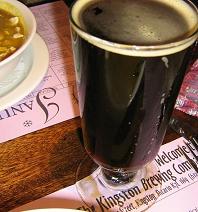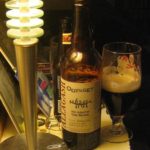Kidney stones, a CT scan of my innards, visits to the ER as well as my GP not to mention a bunch of blood tests with a whack of other acronyms have literally put me off my beer. And not just because I have been reminded to be careful as we all should with the effects of malty goodness on our internal health. Given that I have been given the big pills that one takes when that invisible knife digs in and twists, you sorta have to be abstaining just in care you need to hit the big red button and take one. So, I am taking a break which has led to a number of observations:
⇒ One belt buckle notch has been gained. Already. At this rate, I might have my burly boyish figure back by next autumn. It is tempting… yet slightly shocking. It’s not so much that I am losing weight as deflating. Drinking 20 litres of water a day doesn’t hurt with this either. Taking a break may be good even when it is forced upon me.
⇒ The stash is looking good, too. I have a quite separate joy in shopping for beer, you know. In fact, during one particular bout of, shall we say, moderate flank mega-noogie, there was nothing I found more comforting than a stroll amongst beer shelves picking out a few to stick away. That, too, can be one’s happy place.
⇒ And samples will come in. I got a phone call last night during a very bad zap from the nicest people in beer, the good folk behind the new beer from the new Bush Pilot Brewing telling me a sample was on its way. Between wincing, I had to tell them I had to tell them the bottle would have to sit. But, as my friend in beer shared the 25 ingredients (listed on the label by the way) , I realized what a hypocrite I was. It’s a collaboration with a traveling Nordic brewer, a contract brew, a brew filled with fancy non-beer ingredients, it will be likely past my normal price point and, when the sample came, I saw it had a dipped wax top. And yet I want it. It may need a new name – as metheglin is to mead. But I want it.
⇒ Beer writing also fills a space. I actually have two pieces on the go, not just the longer bit with Max but a medium scale one with Craig. Both footnote laden, one is formal and one is not. One on request and one on spec. But both are serious. So productive I am.
Funny. The imposition is not turning out to be an imposition. Not sure I am ready to take up swishing, spitting and pouring out the stuff in the stash. But there is a heck of a lot to explore about beer other than beer. I had no idea.

 You would never confuse me for a jogger. I am big. I like that. I was over six foot at twelve. A small giant. I can pick up things others can’t. Move large objects. I am often asked by little old ladies to reach the high shelf for them at the grocery store. But you have to watch it. Over two decades ago I took the advice of a doctor to watch my blood tests right after he told me I had the results of an 80 year old. In my family of Scots coffin nail puffers, whisky tipplers, fish ‘n’ chip eaters and sofa lobby dossers, well, the genes aren’t that good and my 1980s fry pan diet was not helping. Twenty odd years later filled with daily salmon oil pills, soy and other bits and pieces of the good stuff has resulted in having the cholesterol and blood sugar levels of a daily runner. But I am still big. Good for leaning into the bumper of a car needing to be unstuck in the snow. Not so good for the second 45 years I consider my allotment in life.
You would never confuse me for a jogger. I am big. I like that. I was over six foot at twelve. A small giant. I can pick up things others can’t. Move large objects. I am often asked by little old ladies to reach the high shelf for them at the grocery store. But you have to watch it. Over two decades ago I took the advice of a doctor to watch my blood tests right after he told me I had the results of an 80 year old. In my family of Scots coffin nail puffers, whisky tipplers, fish ‘n’ chip eaters and sofa lobby dossers, well, the genes aren’t that good and my 1980s fry pan diet was not helping. Twenty odd years later filled with daily salmon oil pills, soy and other bits and pieces of the good stuff has resulted in having the cholesterol and blood sugar levels of a daily runner. But I am still big. Good for leaning into the bumper of a car needing to be unstuck in the snow. Not so good for the second 45 years I consider my allotment in life. So, what to do about that? What to do about the beer? Got me thinking. You know how you play the game of justifying beer. I knew a guy in undergrad who, as part of his “fit yet party” plan, made sure he had over 50% of his caloric intake dedicated to the beer. He didn’t look real good. He invented new shades of grey with his body. Checking around the internet I found a few sources of information on calories and beer but not the real nugget I was searching for. I wondered what was the number of calories in a huge Belgian beer like a 750 ml Trappist quad. Hard to find out. Too much information is couched in the round about approach, in the comforting justification like those found in
So, what to do about that? What to do about the beer? Got me thinking. You know how you play the game of justifying beer. I knew a guy in undergrad who, as part of his “fit yet party” plan, made sure he had over 50% of his caloric intake dedicated to the beer. He didn’t look real good. He invented new shades of grey with his body. Checking around the internet I found a few sources of information on calories and beer but not the real nugget I was searching for. I wondered what was the number of calories in a huge Belgian beer like a 750 ml Trappist quad. Hard to find out. Too much information is couched in the round about approach, in the comforting justification like those found in